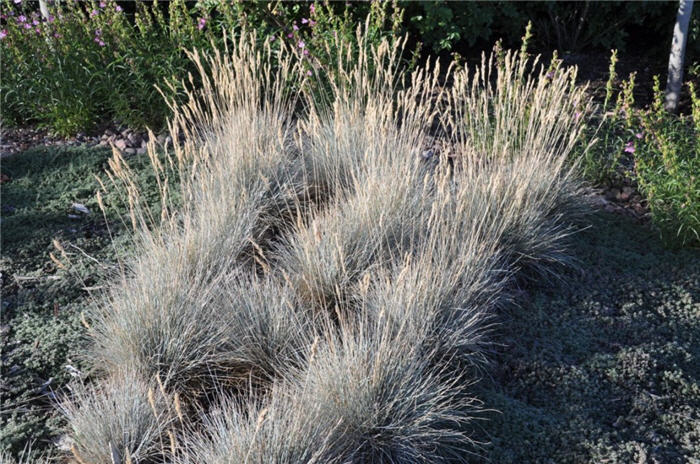| Botanical Name: Festuca glauca 'Boulder Blue' | |
| Common Name: Boulder Blue Fescue |

-
Anatomy
-
Culture
-
Design
Plant Type
Ground cover, Grass
Height Range
1-3'
Flower Color
Green, White
Flower Season
Summer
Leaf Color
Blue Green, Silver
Bark Color
n/a
Fruit Color
n/a
Fruit Season
n/a
Sun
Full, Half
Water
Low
Growth Rate
Moderate
Soil Type
Sandy, Clay, Loam
Soil Condition
Average, Rich, Poor, Well-drained, Dry
Soil pH
Neutral, Basic
Adverse Factors
n/a
Design Styles
English Cottage, Formal, Japanese, Meadow, Mediterranean, Ranch, Spanish, Woodland
Accenting Features
Unusual Foliage
Seasonal Interest
Winter, Spring, Summer, Fall
Location Uses
Entry, Perennial Border, Foundation, Parking Strip, Parking Lot, Walkways, With Rocks
Special Uses
Container, Filler, Mass Planting, Lawn Alternative, Small Spaces
Attracts Wildlife
Birds
Information by: Stephanie Duer
Photographer:
Photographer:
-
Description
-
Notes
Intense blue coloration makes Boulder Blue a standout in the landscape. Grows 15 inches tall and 12 inches wide. Plumes are green to creamy white, turning wheat colored in the fall. Very upright habit. Taller than F. 'Sea Urchin.' Use in the perennial border or as a groundcover, though it isn't well suited for areas with foot traffic. It does look fabulous surrounding pavers for a walk or patio. Evergreen, or very nearly so.
Grows in full to part sun and well drained soil. Soggy or wet soils will cause it to rot out. No need to deadhead; birds love the seeds and the plume tend to breakup and fall apart on their own. Blends beautifully with thyme, sunrose, and pussytoes. Great in parkstrips.